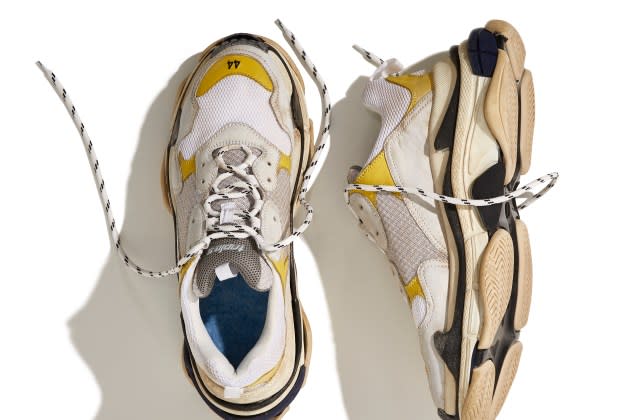The Outside View: Status in Flux, the Power of Distance

For generations, societies have embraced clothing, gold jewelry and other material possessions as symbols of wealth, power and status. These coveted items — like most status symbols throughout history — are expensive, desired, and, importantly, highly visible. Wearing a Rolex or driving a Porsche convertible sends a clear message of class position.
But over the past decade, the symbols of status have started to evolve. As society responds to the pressures of a changing climate and challenging social problems, celebrities like Taylor Swift and Rihanna are modeling old clothing for magazine covers and calling for sustainability, while billionaires like Elon Musk are letting go of their expensive homes.
More from WWD
IFCO Trade Show to Fuel International Standing of Turkish Fashion Brands
The RealReal's 'Reset' Aims for Smaller but More Profitable Business
The changing trends in luxury and fashion are painting a new picture of what matters in status. From the rise of minimalism to the rejection of logomania, there’s a new movement uniquely characterized by distance.
Most status symbols penetrate society through a predictable cycle. Trends and fashion start among the elites and with time tend to trickle down. When exclusive status markers become widespread and mainstream, the top strata abandon these consumption habits and move on to new and different signals, reestablishing distinction from others. Thus, the processes of status signaling and distinction in consumption are characterized by the adoption of new and alternative signals that reinstate (at least temporarily) symbolic boundaries between groups.
Routinely, elites reestablish these boundaries by “upgrading” — moving on to higher-end signals, such as even more exclusive cars, jewelry or vacations. But right now, the luxury goods commonly sought for status signifiers are more easily available. There’s an overload of supply of luxury goods, with many now reaching discount outlets — and selling for a fraction of the original price. There are also online channels, like The RealReal, multiplying the number of touch points that allow access to luxury. Additionally, the quality of counterfeits has increased dramatically.
It’s probably not a coincidence, then, that consumption trends and fashion approaches are changing. Some affluent individuals are concealing their wealth, downsizing their possessions, and letting go of many belongings. In contrast to the usually beautiful and refined aesthetic of traditional luxury goods, Balenciaga’s “ugly luxury” products, featuring unflattering shapes and unconventional color combinations, have garnered great popularity in recent years. The rise of sustainable luxury is exemplified by Prada’s Re-Nylon, crafted from regenerated nylon sourced from previous goods. Furthermore, “athleisure” apparel, such as Louis Vuitton’s technical sports leggings, has emerged as the ultimate status symbol for the dynamic elites who are always on the move. These status symbols depart on at least one dimension from conventional and traditional forms of luxury consumption.
These trends build an overarching theme of distance from traditional status symbols, which is the unifying element of a new framework I outline in the Journal of Consumer Research.

Signals that are distant in some way from products, brands, and preferences that have become traditional and somewhat mainstream deliver on the objective of distinguishing the signaler from others.
Today’s newly embraced alternative symbols can be categorized in terms of distance from traditional luxury goods on the following six focal dimensions:
• Distance in terms of time refers to the difference between traditional status symbols and alternative signals in terms of age along the new/old time continuum (vintage is distant from brand new luxury goods in terms of age).
• Distance in terms of quantity refers to the difference among signals in terms of number of possessions on the many/few continuum (consumer minimalism is distant from material abundance in terms of number of possessions).
• Distance in terms of conspicuousness refers to the difference between traditional status signals and alternative signals in terms of visibility and recognizability on the conspicuous/inconspicuous continuum (subtly branded luxury goods are distant from loudly branded luxury goods in terms of brand visibility).
• Distance in terms of aesthetics refers to the difference among signals in terms of beauty along the beautiful/ugly continuum (ugly luxury goods are distant from aesthetically pleasing luxuries in terms of aesthetics).
• Distance in terms of culture refers to the difference between traditional status symbols and alternative signals in terms of cultural associations along the highbrow/lowbrow cultural continuum (mixing-and-matching high and low status is distant from traditionally highbrow signals in terms of cultural associations).
• Distance in terms of pace of life refers to the difference in rhythm of activities on the slow/fast continuum (active leisure and busyness at work are distant from traditional leisure time).
An integrated perspective on these alternative signals of status offers practical implications for marketers and brand managers of symbolic products.
First, the dimensions can encompass different status-related trends and products that have so far appeared as scattered and unconnected phenomena in the marketplace. For example, a company could map all the luxury products launched in the last months or years onto the categories described above and gain insight into the popularity of different dimensions at any given time. Performing the same exercise at the brand level may also be illuminating, given that some high-end brands seem to pursue distance from mainstream signals on multiple dimensions at once. The status-distance framework may help these brands conceptualize their portfolios of existing and new products in more organized and synoptic ways.
Second, the framework may help high-end brands that do not seem to pursue distance on multiple dimensions identify additional expansion opportunities.
The distance framework also can identify the characteristics of the alternative signals that are likely to emerge and therefore may better guide and channel the creative efforts geared to innovation and new product launch. Identifying the type of distance sought (cultural distance — subcultures, aesthetic distance — ugliness) and then brainstorming and innovating around such themes may prove more fruitful than giving free rein to creative impulses and designing new products without input.
Of course, these alternative signals are not the only way elites signal their status through consumption. The traditional luxury market is thriving, and it’s expected to continue to do so. Other potential aspects of status signaling and other dimensions emerged from the data, such as gender expression (distance on the binary/fluid continuum) and space (distance on the far/close continuum).
Status symbols will continue to evolve in a world where traditional luxury goods are becoming more mainstream. But right now, brands, celebrities and fashionistas want to use distance to signify their standing.
Silvia Bellezza is an associate professor of business in marketing at Columbia Business School.
Best of WWD

